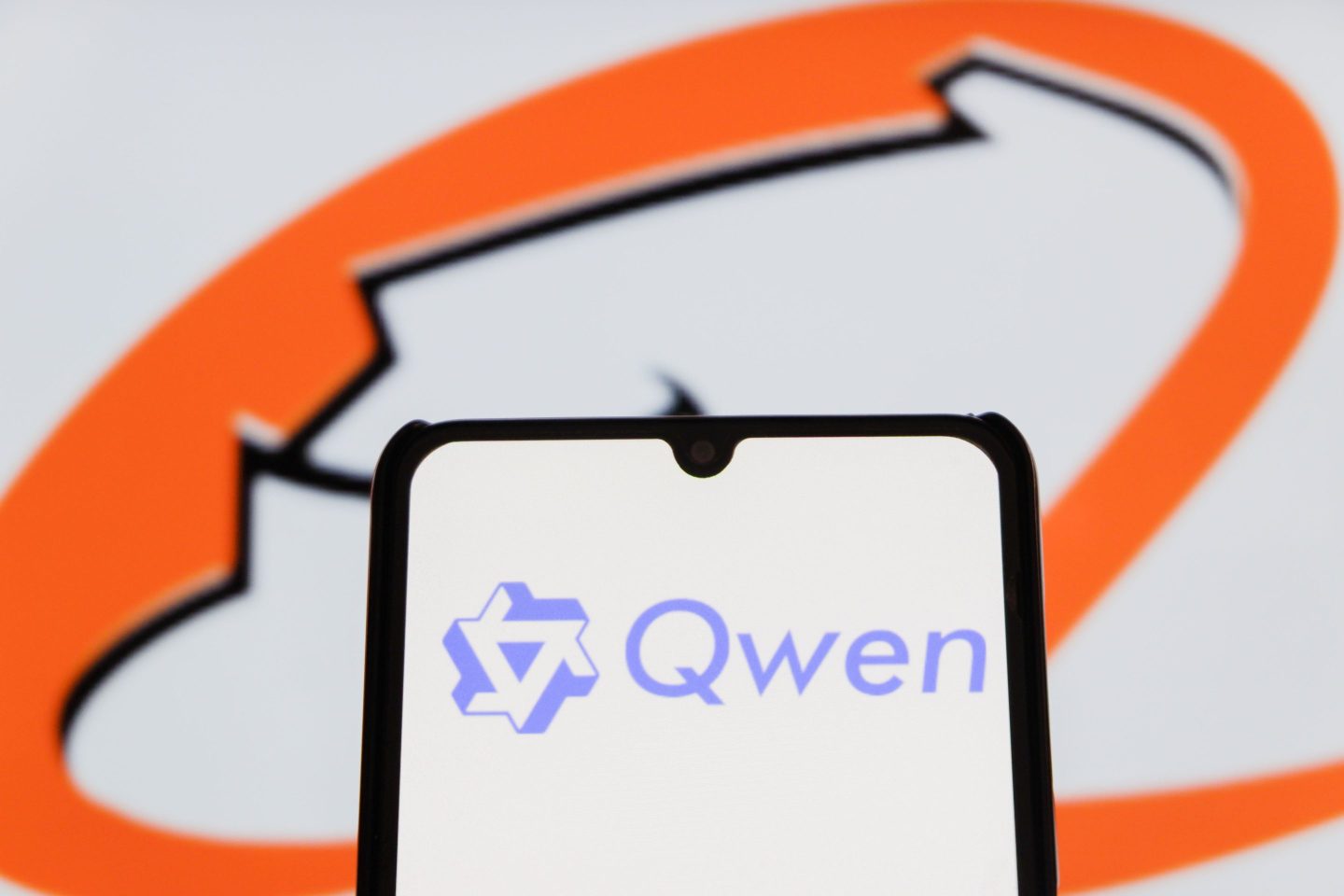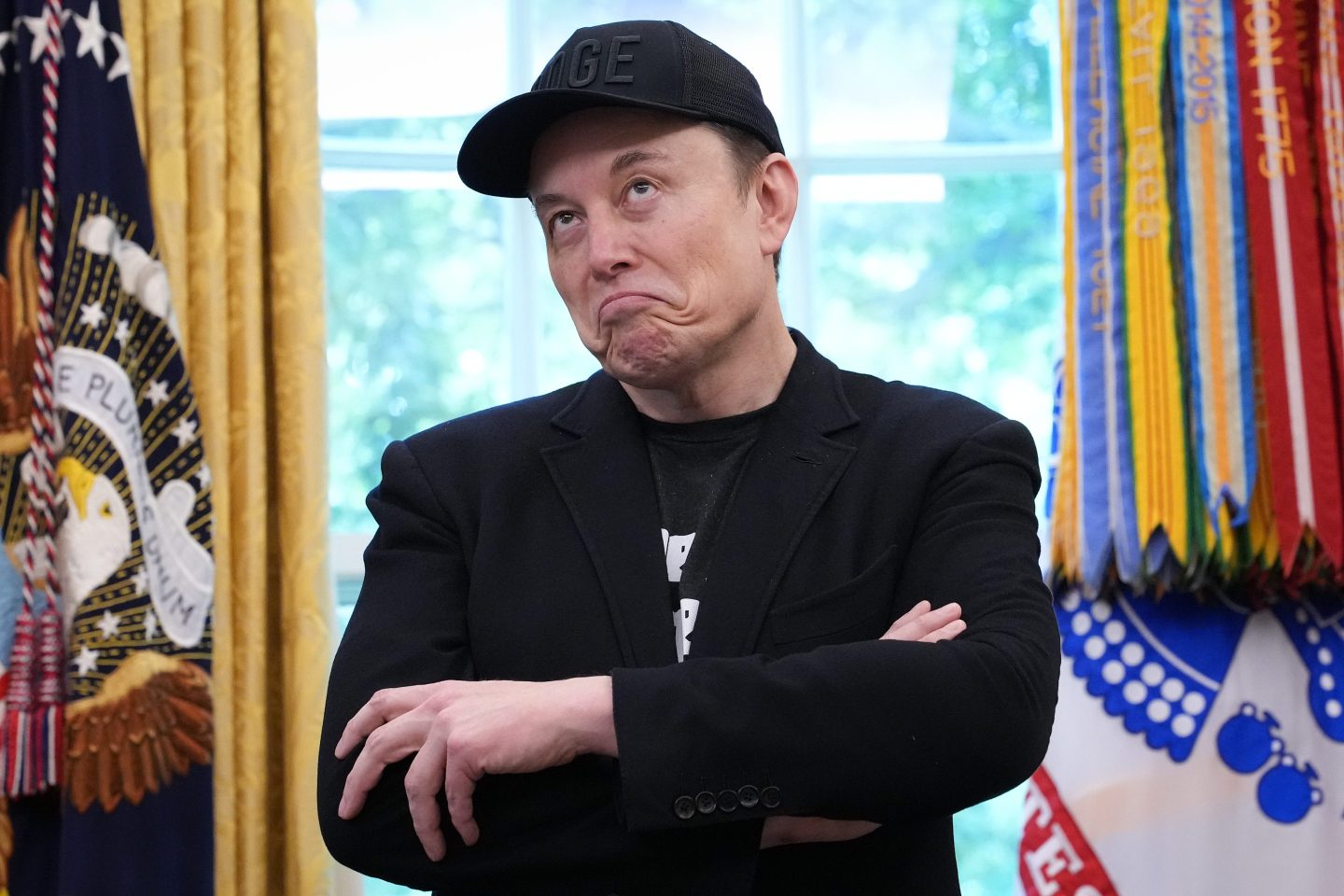Hello and welcome to Eye on AI. In this edition….Gemini 3 puts Google at the top of the AI leaderboards…the White House delays an Executive Order banning state level AI regulation…TSMC sues a former exec now at Intel…Google Research develops a new, post-Transformer AI architecture…OpenAI is pushing user engagement despite growing evidence that some users develop harmful dependencies and delusions after prolonged chatbot interactions.
I spent last week at the Fortune Innovation Forum in Kuala Lumpur, Malaysia, where I moderated several panel discussions around AI and its impacts. Among the souvenirs that I came back from KL with was a newfound appreciation for the extent to which businesses outside the U.S. and Europe really want to build on open source AI models and the extent to which they are gravitating to open source models from China.
My colleague Bea Nolan wrote a bit about this phenomenon in this newsletter a few weeks ago, but being on the ground in Southeast Asia really brought the point home: the U.S., despite having the most capable AI models out there, could well lose the AI race. And the reason is, as Chan Yip Pang, the executive director at Vertex Ventures Southeast Asia and India, said on a panel I moderated in KL, that the U.S. AI companies “build for perfection” while the Chinese AI companies “build for diffusion.”
One sometimes hears a U.S. executive, such as Airbnb CEO Brian Chesky, willing to say that they like Chinese open source AI models because they offer good enough performance at a very affordable price. But that attitude remains, for now at least, unusual. Many of the U.S. and European executives I talk to say they prefer the performance advantages of proprietary models from OpenAI, Anthropic, or Google. For some tasks, even an 8% performance advantage (which is the current gap separating top proprietary models from Chinese open source models on key software development benchmarks) can mean the difference between an AI solution that meets the threshold for being deployed at scale and one that doesn’t. These execs also say they have more confidence in the safety and security guardrails built around these proprietary models.
Asia is building AI applications on Chinese open source models
That viewpoint was completely different from what I heard from the executives I met in Asia. Here, the concern was much more about having control over both data and costs. On these metrics, open source models tended to win out. Jinhui Yuan, the cofounder and CEO of SiliconFlow, a leading Chinese AI cloud hosting service, said that his company had developed numerous techniques to run open source models more cost-effectively, meaning using them to accomplish a task was significantly cheaper than trying to do the same thing with proprietary AI models. What’s more, he said that most of his customers had found that if they fine-tuned an open source model on their own data for a specific use case, they could achieve performance levels that beat proprietary models—without any risk of leaking sensitive or competitive data.
That was a point that Vertex’s Pang also emphasized. He cautioned that while proprietary model providers also offer companies services to fine-tune on their own data, usually with assurances that this data will not be used for wider training by the AI vendor, “you never know what happens behind the scenes.”
Using a proprietary model also means you are giving up control over a key cost. He says he tells the startups he is advising that if they are building an application that is fundamental to their competitive advantage or core product, they should build it on open source. “If you are a startup building an AI native application and you are selling that as your main service, you better jolly well control the technology stack, and to be able to control it, open source would be the way to go,” he said.
Cynthia Siantar, the CEO of Dyna.AI, which is based in Singapore and builds AI applications for financial services, also said she felt some of the Chinese open source models performed much better in local languages.
But what about the argument that open source AI is less secure? Cassandra Goh, the CEO of Silverlake Axis, a Malaysian company that provides technology solutions to financial services firms, said that models had to be secured within a system—for instance, with screening tools applied to prompts to prevent jailbreaking and to outputs to filter out potential problems. This was true whether the underlying model was proprietary or open source, she said.
The conversation definitely made me think that OpenAI and Anthropic, both of which are rapidly trying to expand their global footprint, may run into headwinds, particularly in the middle income countries in Southeast Asia, the Middle East, North Africa, and Latin America. It is further evidence that the U.S. probably needs to do far more to develop a more robust open source AI ecosystem beyond Meta, which has been the only significant American player in the open source frontier model space to date. (IBM has some open source foundation models but they are not as capable as the leading models from OpenAI and Anthropic.)
Should “bridge countries” band together?
And that’s not the only way in which this trip to Asia proved eye-opening. It was also fascinating to see the plans to build out AI infrastructure throughout the region. The Malaysian state of Johor, in particular, is trying to position itself as the data center hub for not just nearby Singapore, but for much of Southeast Asia. (Discussions about a tie-up with nearby Indonesia to share data center capacity are already underway.)
Johor has plans to bring on 5.8 gigawatts of data center projects in the coming years, which would consume basically all of the state’s current electricity generation capacity. The state—and Malaysia as a whole—has plans to add significantly more electricity generation, from both gas-powered plants and big solar farms, by 2030. Yet concerns are growing about what this generation capacity expansion will mean for consumer electricity bills and whether the data centers will drink up too much of the region’s fresh water. (Johor officials have told data center developers to pause development of new water-cooled facilities until 2027 amid concerns about water shortages.)
Exactly how important regional players will align in the growing geopolitical competition between the U.S. and China over AI technology is a hot topic. Many seem eager to find a path that would allow them to use technology from both superpowers, without having to choose a side or risk becoming a “servant” of either power. But whether they will be able to walk this tightrope is a big open question.
Earlier this week, a group of 30 policy experts from Mila (the Quebec Artificial Intelligence Institute founded by AI “godfather” and Turing Award winner Yoshua Bengio), the Oxford Martin AI Governance Initiative, and a number of other European, East Asian, and South Asian institutions jointly issued a white paper calling on a number of middle income countries (which they called “bridge powers”) to band together to develop and share AI capacity and models so that they could achieve a degree of independence from American and Chinese AI tech.
Whether such an alliance—a kind of non-aligned movement of AI—can be achieved diplomatically and commercially, however, seems highly uncertain. But it is an idea that I am sure politicians in these bridge countries will be considering.
With that, here’s the rest of today’s AI news.
Jeremy Kahn
jeremy.kahn@fortune.com
@jeremyakahn
If you want to learn more about how AI can help your company to succeed and hear from industry leaders on where this technology is heading, I hope you’ll consider joining me at Fortune Brainstorm AI San Francisco on Dec. 8–9. Among the speakers confirmed to appear so far are Google Cloud chief Thomas Kurian, Intuit CEO Sasan Goodarzi, Databricks CEO Ali Ghodsi, Glean CEO Arvind Jain, Amazon’s Panos Panay, and many more. Register now.
FORTUNE ON AI
Amazon’s layoffs and leaked AI plans beg the question: Is the era of robot-driven unemployment upon us?—by Jason del Rey
Sam Altman says OpenAI’s first device is iPhone-level revolutionary but brings ‘peace and calm’ instead of ‘unsettling’ flashing lights and notifications—by Marco Quiroz-Gutierrez
Deloitte just got caught again citing fabricated and AI-generated research—this time in a million-dollar report for a Canadian provincial government—by Nino Paoli
Lovable’s CEO targets enterprise customers as the ‘vibe-coding’ unicorn doubles its annual revenue to $200 million in just four months—by Beatrice Nolan
AI IN THE NEWS
White House launches “Genesis Mission” to give AI-driven boost to science. President Trump signed an executive order launching what he is calling the “Genesis Mission,” a massive federal initiative to harness artificial intelligence and government science datasets via the U.S. Department of Energy and its national laboratories. The mission aims to build a unified AI‐driven research platform—linking supercomputers, university and industry partners, and federal data—to accelerate breakthroughs in fields like energy, engineering, biotech and national security. While pitched as a scientific “moonshot”-style effort, the initiative faces questions about its funding model and how it will manage sensitive national-security and proprietary data. Read more here from Reuters.
TSMC sues former executive who defected to Intel over alleged trade secret theft. TSMC has sued former senior executive Lo Wei-Jen, now at Intel, alleging he took or could disclose the company’s trade secrets, the Financial Timesreports. The company alleges that Wei-Jen told it he planned to enter academia after retiring in July. The case underscores intensifying geopolitical and commercial pressures in the global race for advanced chipmaking, as TSMC—responsible for more than 90% of the world’s leading-edge semiconductors—faces rising competition backed by a major U.S. government investment in Intel.
Google debuts Gemini 3 model, hailed by the company and some users as a big advance. Google launched its Gemini 3 large language model last week. The model surpassed rival models from OpenAI and Anthropic on a wide range of benchmark tests and its performance seems to have largely impressed users who have tried it, according to social media posts and blogs. The launch of Gemini 3—which Google immediately integrated into its AI-powered search features, such as AI Overviews and “AI Mode” in Google Search—is being hailed as a turning point in the AI race, helping restore investor confidence in Google-parent company Alphabet after years of anxiety about it losing ground. You can read more from the Wall Street Journalhere.
Anthropic premiers Claude Opus 4.5. Anthropic unveiled Claude Opus 4.5, its newest and most powerful AI model, designed to excel at complex business tasks and coding. The premiere—Anthropic’s third major model release in two months—comes as the company’s valuation has surged to roughly $350 billion following multibillion-dollar investments from Microsoft and Nvidia. Anthropic says Opus 4.5 outperforms Google’s Gemini 3 Pro (see above news item) and OpenAI’s GPT-5.1 on coding benchmarks, and even beat human candidates on its internal engineering exam, and is rolling out alongside upgraded tools including Claude Chrome, Claude for Excel, and enhanced developer features, according to a story in CNBC.
White House reportedly pauses work on Executive Order targeting state AI laws. Reuters reports that the White House has paused a draft executive order that would have aggressively challenged state AI regulations by directing the Justice Department to sue states and potentially withhold federal broadband funds from those that impose AI rules. The move—backed by major tech firms seeking uniform national standards—sparked bipartisan criticism from state officials and lawmakers, who argued it would undermine consumer protection and was potentially unconstitutional. The administration may still try to include a moratorium on state-level AI rules in the National Defense Authorization Act or another spending bill that Congress has to pass in the coming weeks. But so far, opposition highlights the intense political backlash to federal attempts to preempt state AI laws.
OpenAI offices locked down due to concerns about former Stop AI activist. OpenAI employees in San Francisco were briefly instructed to remain inside the office after police received a report that one of the cofounders of Stop AI had allegedly made threats to harm staff and might have acquired weapons. Stop AI publicly disavowed the individual and reaffirmed its commitment to nonviolence. Stop AI is an activist group trying to stop the development of increasingly powerful AI systems, which it fears are already harming society and also represent a potentially existential risk to humanity. The group has engaged in a number of public demonstrations and acts of civil disobedience outside the offices of major AI labs. Read more here from Wired.
EYE ON AI RESEARCH
Are we inching closer to a post-Transformer world? It’s been eight years since researchers at Google published their landmark research paper, “Attention is All You Need,” which introduced the world to the Transformer, a kind of neural network design that was particularly good at predicting sequences in which the next item depends on items that appeared fairly remotely from that item in the prior sequence. Transformers are what all of today’s large language models are based on. But AI models based on Transformers have several drawbacks. They don’t learn continuously. And, like most neural networks, they don’t have any kind of long-term memory. So, for several years now, researchers have been wondering if some new fundamental AI architecture will come along to displace the Transformer.
Well, we might be getting closer. Earlier this month, researchers—once again from Google—published a paper on what they are calling Nested Learning. It essentially breaks the neural network’s architecture into nested groups of digital neurons that update their weights at different frequencies based on how surprising any given piece of information is compared to what that part of the model would have predicted. The parts that update their weights more slowly form the longer-term memory of the model, while the parts that update their weights more frequently form a kind of shorter-term “working memory.” And nested between them are blocks of neurons that update at a medium speed, which modulates between the shorter and longer term memories. As an example of how this can work in practice, the researchers created an architecture they call HOPE that learns its own best way of optimizing each of these nested blocks. You can read the Google research here.
AI CALENDAR
Nov. 26-27: World AI Congress, London.
Dec. 2-7: NeurIPS, San Diego
Dec. 8-9: Fortune Brainstorm AI San Francisco. Apply to attend here.
Jan. 6: Fortune Brainstorm Tech CES Dinner. Apply to attend here.
Jan. 19-23:World Economic Forum, Davos, Switzerland.
Feb. 10-11: AI Action Summit, New Delhi, India.
BRAIN FOOD
OpenAI is optimizing for engagement, even though there’s growing evidence its product harms some users. That’s the conclusion of a fascinating New York Times investigation that details how increasing commercial pressures within OpenAI—and a new cadre of executives hired from traditional tech and social media companies—have been driving the company to design ChatGPT to keep users engaged. The company is proceeding down this path, the newspaper reports, even as its own research shows some ChatGPT users develop dangerous emotional and psychological dependencies on the chatbot and that some subset of those become delusional after prolonged dialogues with OpenAI’s AI.
The story is a reminder of why AI regulation is necessary. We’ve seen this movie before with social media, and it doesn’t end well, for individuals or society. Any company which offers its service for free or substantially below cost—which is the case for most consumer-oriented AI products right now—has a strong incentive to monetize the user either through engagement (and advertising) or, perhaps even worse, directly paid persuasion (in some ways worse than conventional advertising). Neither is probably in the user’s best interest.












